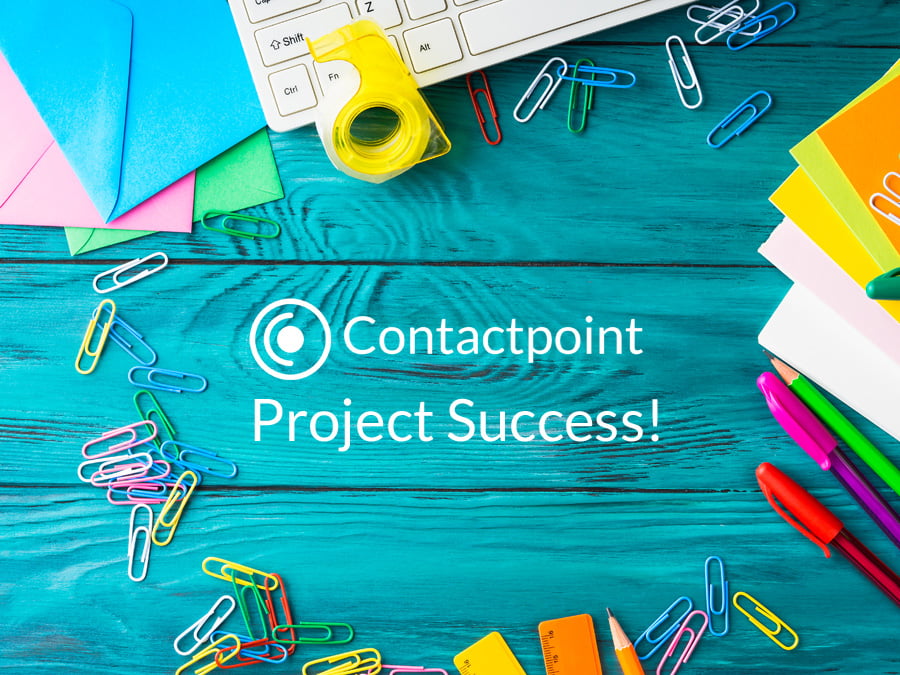Why our Projects are Successful
January 29th, 2024 by Ammu NairThe balancing art of project management – finding equilibrium between following the process and the imperative of getting it done — is paramount.

Project management often gets a bad reputation in any industry; this is because of the popular view that project managers can be very rigid and too structured, adding to the project cost and often getting in the way of just getting things done and achieving that final goal. This is because no one strategy or methodology fits all projects.
At Contactpoint, we understand that each project is unique with varying sets of attributes and expectations – budget & resources, time to market, strict or rigid requirements, to name a few. Subsequently, whilst our Project Management strategy is based on the Agile methodology, we tune our approach according to the characteristics of each project.
The core principles of Agile project methodology – continuous improvement, absolute transparency in communication, and collaboration – are deeply ingrained into our way of working. On any particular day, our team work on projects that are of all sizes and from many different niche industries / backgrounds. Having our development team working together out of our Melbourne office fosters collaboration and helps us have spontaneous team meetings to address issues as soon as they surface, while utilising each person’s unique strengths. Agility is the lifeblood of our team, however, the way we manage our projects as described below, ensures the successful execution of each project.
Our Project DNA
All our projects have a kick-off meeting – which is marked by the handover of the project technical documentation to our development team. Our technical documentation includes the scope, goals, structure and design. It is a living document, and actively collaborated on throughout the project.
As we are working on projects that are of all sizes, for different industries and market types, the appropriate project phases can differ. Some projects require a full-fledged design phase – including wireframes, front-end design and technical design laying out the architecture of the solution – and subsequent sign-off of these deliverables, while smaller projects will only have a front-end design, in which case the kick-off meeting with our developers happens only after the front-end design has been signed off.
Regardless of the project size, the kick-off meeting and the solid structure of our technical document ensures that our team is completely onboard with the scope and goals of the project, allowing them to make decisions that align with the expectations and nature of the particular project. The extensive structure of our technical document is built on our experience from delivering IT projects – large and small – from all sorts of industries, over the last 2 decades, and is therefore extremely comprehensive yet easily adaptable to all projects. It captures all the essential elements of the build including the technical structure, details of the underlying framework / technology along with nuances of the build unique to the project. It may also includes historical information of the application providing insights into the required hosting and deployment considerations for the new application. Often, the history section contains important information about the current processes or technology followed by our clients, helping our team make crucial decisions about the current project build which in turn, helps our client achieve the easiest transition to the new way of working, and achieve their project goals.
Apart from serving the obvious purpose of recording all project information, the document helps our project delivery manager to travel ahead of the development team by essentially following the journey specified in the document. This helps the team foresee any blockers and mitigate issues due to unpredictable situations; because, while all problems have a solution in IT, timely discovery and collaboration is what can make or break a project! This also enables us to set clear expectations with project stakeholders, and keep them informed with regard to the journey, culminating in the launch of their product, application or website.
Whilst our processes form the strength of our project execution model, they continue to be improved based on our learnings from each project, simply because we are constantly looking for ways to improve, and help our clients grow using technology.
After the project is completed, our technical documentation is a constant reference for years to come, and will continue to be updated as new features are added. There’s a special section for trouble-shooting, where the solution to issues are recorded.
Technology to Grow
We understand that the launch of a product or application is really just the start of our client’s journey or dream and that the real test of the product is when it is in the market, used by its true end-users. That’s why we have given so much attention to developing our pre and post launch process, ensuring that our clients are engaged in the process in a way that works for them, and that we deliver a solution that achieves their goals.
Our post-launch support period, and subsequent application maintenance services, further seals the deal by seeking and prioritising user feedback, optimising performance, reinforcing security, planning for scalability, and adapting to market trends because truly, we are constantly looking for ways to help our clients grow!







